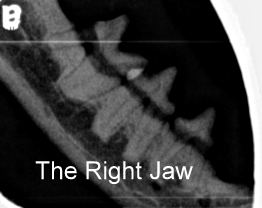What will be in store for Russell Vale Animal Clinic for 2016?
We are filled with such hopes, dreams and aspirations, aren't we, as human beings, and then reality occurs. Things can happen which can derail those dreams and hopes.
Well, 2015 was again one of those years - it started with someone hacking my computer, and diverting $3000 (that was to pay a tree loper), and ended with the never ending foot path/driveway council work - with multiple break ins, vandalism, and theft of services in the inbetween months.
It almost feels like Russell Vale Animal Clinic is a living version of "Groundhog Day" (for those who are young, this is a reference to a movie which you should never watch when you are drunk). In 2014, we endured multiple break ins, enough to make it into the local newspaper! 2015 was supposed to be a better year - in which it was, but then it wasn't in other ways.
I won't ever give up on my childhood dream!
So, what does 2016 hold for us?
I am so excited about the plans I have for the next twelve months and beyond, and it has already started. It is as a result of our ongoing investment in our equipment, and ongoing training to provide services that our pets deserve. I am not going to let a few breakins, a smashed pot plant or three, or anything else (although I am not trying to challenge fate), stop me.
Online Veterinary Advice
Ok, this doesn't require extra equipment or skills, but it is something which every pet owner deserves - an email service, where you can ask any question from your vet, and have it answered within a reasonable time frame. We aim for within 24 hours, and if you are lucky, it is within 2 hours.
 |
| Dr Liz is as reliable as your Lab |
So it isn't for emergency advice, but then you know to take your pet to an emergency vet for that. But what about the "hiccuping puppy", or the "just wanted to confirm the dose of abc medications"? Our online veterinary advice service is perfect for that.
After all, isn't most of the questions you have about the care of your pet not urgent? Serious enough that you want an answer to, but not serious enough that you are able to pay a vet for?
Our online veterinary service is free, but of course, we will accept donations, which can be made directly via paypal.
Eyes are the Window to the Soul
It is true that the eyes are the windows to our soul, but when they are irritated, so is the owner of these eyes (and the pet's owner too).
Our eye examination usually includes a Schirmer Tear Test (measuring tear production), Fluroscein staining (checking for irregularities to the cornea), and checking for foreign bodies.
Whilst we are experienced in dealing with "red eyes", we had to rely on old technology (our Schiotz tonometer" in being able to accurately measure eye pressures.
In December 2015, our digital Tonovet arrived, which will revolutionize our diagnosis and management of "Red Eyes", whether it be uveitis or glaucoma.
 |
| Fluroscein staining on an indolent corneal ulcer (prior to grid keratotomy) |
With our new Tonovet, we are able to accurately measure eye pressures - so instead of saying "it feels soft", we can say " the eye pressure is 8 mm, with the normal range of 15 to 25" (common in uveitis), or "the eye is bulging", we can say "the eye pressure is 56 mm, with the normal range of 15-25" (common in glaucoma, either primary or secondary).
We are expanding our opthalmic service in 2016, to go beyond what we currently do. We are currently able to manage successfully "Dry Eye", Red eyes, eyelid nodules, corneal ulcers and ulcerations, weepy eyes, conjunctivitis, cherry eye, epiphora, keratitis, keratoconjunctivitis sicca, as well as blocked tear ducts.
You can't handle the "Tooth" - ah, yes, I can!
Sorry for my poor pun on "You can't handle the Truth", a great line by actor Jack Nicholson in the Tom Cruise movie, "A Few Good Men" (1992)
 |
| Identifying, and extracting unerupted/hidden teeth and fractured tooth roots is our specialty (sadly). |
Ah, yes, we can handle the truth, and your pet's tooth (or teeth), as we have spent many years training to be able to do just that! In December 2015, we upgraded our dental base to a (almost) top of the line dental base with suction and LED lighting (of course, this description will mean nothing to you, but everything to those vets with a working wish list). With the training that we are currently undergoing (you know, in the spare time I have from working as a solo vet), we are hoping to offer services that would've often meant extraction of the tooth, or referral to a veterinary dental specialist.
Whilst many of my loving pet owners are willing and able (financially, and with their time) to travel to a veterinary dentist, there are an equal (if not more) number of pet owners who are not able to . Their pets still need the care, which is something that I, as a vet, recognise.
Hence our commitment to working towards being able to bring in to you, for your pets.
There are many "tooth salvaging " procedures, such as advanced periodontal therapies which we have been offering for a few years now (whereas under normal circumtances elsewhere, extraction would be the only option available). This is one of the many reasons, why we are one of the best providers of veterinary dental care in the Illawarra region.
As a final note - we do not extract or perform any dental procedures on your pet without your permission aka - we keep you informed 100% of the time.
Beauty is skin deep, but the itch goes on!
Ah, but the itchy dog seems to annoy more than just the pet. Being the owner of an itchy pet, every time Piper goes to even look at licking her feet, or chewing her back leg, I squirm. Allergic skin disease is one of the most frustrating diseases pet owners face.
For those who may not know, Piper is a 2 yr old desexed female kelpie, who has been diagnosed with Food allergy (beef, chicken, fish, lamb, egg, rice), Inhalant allergies (multiple grasses, pollens, dust and dust mite plus cockroaches), Insect bite allergy (fleas predominantly), and she is probably allergic to alot of other things that are yet to be determined. She is currently on desensitisation injections three weekly, a strict diet (with a dash of doggie scavenging), antihistamines, sprays and special shampoos/conditioners. Despite all of this, she still has episodes of itchiness, but if you looked at her - you wouldn't know - her coat is shiny, and she looks awesome.
It takes alot of work to keep her that way. With the knowledge of knowing that we will never cure her, but can only manage her condition to make her comfortably itchy.
So what is new for 2016 - ah, I shall not tell yet, except to say that we feel, oh boy do we feel (and understand), the frustration of an itchy pet. We also understand that whilst the best practice of skin testing and creation of a personalised vaccine is the best (as this is what we are doing for Piper), that this is an expense that many pet owners cannot do. I do not say that with disrespect or rudeness, but from experience - I have had only one pet owner pursue allergy testing (other than me), yet I have seen many allergic pets, and the frustration that this brings.
We are hoping to bring to you an affordable desensitization allergy treatment, as well as a new medication to sooth the chronically itchy pet.
 |
| Dr Liz aka Mad Vet |
It is a "watch this space", (or subscribe to our newsletter) to find out more when this becomes available
Is there more?
Well, yes, I do have alot more planned for 2016 - and it is only through listening to the sort of things that you, the loving pet owner tell us that you are looking for.
I am Dr Liz, the mad vet from Bellambi Lane.






































